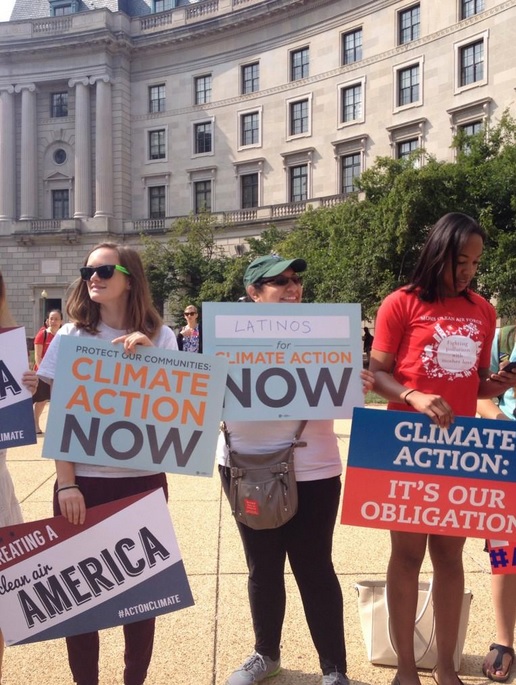With a bitter-sweet feeling, I left Washington, D.C., after spending the last 7 months of my life with World Wildlife Fund (WWF), one of the world’s oldest and biggest environmental non-governmental organizations, working as the Latino Climate Change Communications and Policy Intern. I am so grateful that I had the chance to be part of a talented, hard-working, and caring group of people that is the Climate team at WWF. As part of the Panda family, I witnessed the power of action through teamwork. Teamwork requires detailed attention to communication skills and group dynamics, but the act of innovation definitely played a big role. Two key examples of team work was the development of the ¡Climático! initiative and the preparations in the run-up to the 20th Conference of the Parties (COP20) of the United Nations Framework Convention on Climate Change (UNFCCC).

¡Climático!
With the urgency of climate action and commitment from the US, I was part of WWF’s development of the ¡Climático! initiative and its logistics all through my internship. This initiative focused on raising awareness and mobilizing US Latinos on climate action through the connection to their country of origin in Latin America, a region extremely vulnerable to the impacts of climate change. The Latino population in the US is a strong and powerful constituency but where the impacts of climate change is concerned, it is highly vulnerable. Helping this constituency to achieve its environmental and climate goals is something that WWF cares about. Although WWF has a deep and long-standing presence in Latin America, the US Latino population was new territory within the climate work, and creating this bridge across the Americas was mandatory.
For the development of the strategy, weekly meetings were held where experts from all the areas such as media team, governments affairs, private sector engagement, among others had brainstorming sessions to identify stories to be told, critical messaging about the importance of climate action within the US Latino population, and engagement pathways from WWF to US-Latinos as well as US-Latinos to the government. Not only the US office worked on ¡Climático!–inputs were received from the network of Latin American country offices, as well. The ¡Climático! initiative is a great example of innovative work for WWF; one that I’m sure will transcend its expected outcomes and give new and exciting plans.
In the run-up to COP20
Throughout the first year of the Bard CEP program, I experienced different kinds of analytical writing, but the one that helped me the most in this part of the internship was the case study methodology. An important task in the run-up to the COP was creating country profiles from the Latin America and Caribbean region that focused on the current status of climate policies as an important background document to the development of the advocacy strategy for the COP. This required constant communication with the country offices in order to verify information and/or add missing data. It was challenging since we were dealing with different time zones and busy schedules.
Last year in particular, WWF global network sought the support of its country office in Lima, Peru, since the country was the COP20 host. Similar to the ¡Climático! dynamic, weekly coordination meeting calls were held between the whole network to get everyone attending the COP on the same page with the best approach to deal with the critical negotiation topics issues.
Fortunately, my past involvement in the UNFCCC talks and the flexibility of the internship made it possible for me to participate once again at COP20 as part of the Dominican Republic delegation. Despite the spoken expectations from different groups as to the results of the COP, it must be recognized that for the first time all countries, developed and developing, expressed their commitment to reduce greenhouse gas (GHG) emissions, a crucial step to the outline of elements that will be part of the next agreed outcome with legal force under the Convention.

A year to remember…
Last year was definitely a memorable year, not only to me but to everyone involved in the climate community. From the bigger picture, we saw the biggest climate movement in history when roughly a half million people took the streets of New York City to raise their voices on climate action at the People’s Climate March. We also witnessed governments, both from developed and developing countries demonstrate that they are ready and willing to take action on climate change. For example, the United States gave a lot to talk about with its Clean Power Plan Proposed Rule, the generous pledge to the Green Climate Fund (GCF), and the historical agreement with China. Another example can be found in several Latin America countries such as Chile with the establishment of a carbon tax, Colombia working on presenting its climate change law, and pledges from Mexico and Panama to the GCF.
……..Stay tuned, we haven’t seen it all yet.

